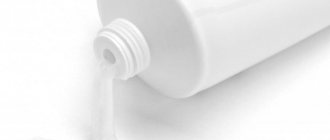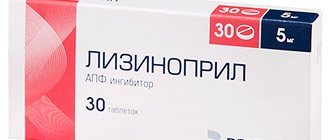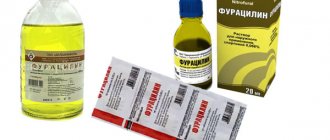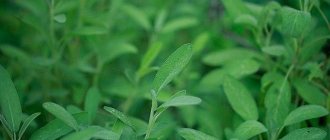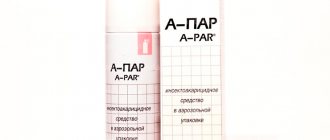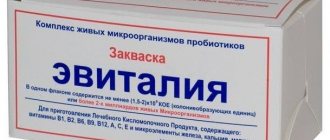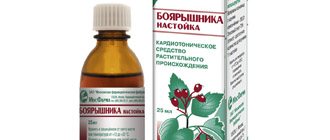Indications for use
This drug has antipyretic, anti-inflammatory and analgesic effects on the human body. In addition, when applied topically, Antipyrin is also a hemostatic drug.
This drug is prescribed for use for neuroses of various etiologies, colds, and Antipyrin is also part of complex therapy for the treatment of rheumatism, febrile conditions and joint diseases that are accompanied by pain.
Locally, this drug can be used in cases of nosebleeds.
Pharmacological action of Antipyrin
According to the instructions, Antipyrin has analgesic, antipyretic and anti-inflammatory effects due to its ability to cyclooxygenase (inhibition of inflammatory enzymes). As a result, the synthesis of biologically active substances (prostaglandins), which take part in the process of inflammation, is disrupted.
In terms of analgesic and antipyretic properties, Antipyrin is similar to aspirin, which is a salicylic acid drug.
Local use of the drug is due to its hemostatic (hemostatic) effect.
Contraindications
Antipyrine also has several contraindications. In medicine, these include the following diseases and conditions:
- individual hypersensitivity to any of the components of the drug;
- severe form of renal failure and progressive diseases of the kidneys and liver;
- the period of pregnancy, especially its third trimester;
- hyperkalemia;
- stomach and duodenal ulcers, inflammatory processes in the gastrointestinal tract;
- gastrointestinal bleeding.
This drug should be used with extreme caution if the patient has a history of diseases such as:
- diabetes;
- cerebrovascular diseases;
- cardiac ischemia;
- chronic form of heart failure;
- hyperlipedemia;
- dyslipidemia;
- diseases of peripheral arteries;
- severe forms of somatic diseases;
- tobacco addiction, alcoholism.
Yodantipyrine - instructions for use
INSTRUCTIONS for medical use of the drug
Registration number:
Trade name of the drug: YODANTIPYRINE
Chemical name: 1-phenyl-2,3-Dimethyl-4-iodopyrazolone
Dosage form:
Description Tablets are white, odorless or with a slight specific odor, flat-cylindrical, with a bevel.
Composition Active substance: iodantipyrine – 0.1 g Excipients: potato starch, glucose, magnesium stearate, low molecular weight medical polyvinylpyrrolidone.
Pharmacotherapeutic group:
ATX code: [J05AX]
Pharmacological properties. Pharmacodynamics.
Yodantipyrine has anti-inflammatory, immunostimulating and interferonogenic properties. Stabilizes biological membranes and delays the penetration of the virus into the cell. It is an active inducer of alpha and beta interferon, stimulates cellular and humoral immunity. Active against tick-borne encephalitis virus, hemorrhagic fever with renal syndrome. Pharmacokinetics. Rapidly absorbed from the gastrointestinal tract, bioavailability is 80%. Up to 95% is metabolized in the liver. Excretion in urine through the kidneys by active transport into the renal tubules: 3-5% unchanged, 80-90%) - inactive metabolites. Has a high affinity for tissue proteins. Blood protein binding is 25%. The half-life is about 6 hours.
Directions for use and dosage
Antipirin tablets are taken in the following dosages and regimen: adult patients are prescribed 0.25 - 0.5 grams, children after six months - 0.025 - 0.15 grams of the drug two to three times a day.
The maximum daily dosage is three grams of the drug, a single dose is one gram.
To stop nosebleeds, it is necessary to use a ten to twenty percent solution of Antipyrine powder. A tampon or napkin is moistened in the solution and applied to the nasal sinuses.
Contraindications and side effects
This medicine has a number of contraindications that must be studied before use. Not allowed for use in case of individual intolerance to the components. It is also prohibited to take it if you have hyperthyroidism. In case of dysfunction and diseases of the liver and kidneys, the drug is also prohibited for use. Not suitable for use by children, pregnant women and women during breastfeeding.
Most often, side effects are observed in people with individual intolerance to the components. Side effects are also observed when the medication is taken incorrectly and dosages are exceeded. With these effects, the following symptoms are observed: redness, irritation, and possible rashes appear on the skin. Nausea and vomiting are also observed, pain in the abdominal area and bloating may appear.
Pharmacological properties
Pharmacodynamics
Yodantipyrine has anti-inflammatory, immunostimulating and interferonogenic effects. Delays the penetration of the virus into cells and stabilizes biological membranes. Stimulates humoral and cellular immunity, is an active inducer of alpha and beta interferon. Shows activity against hemorrhagic fever with renal syndrome and tick-borne encephalitis virus.
Pharmacokinetics
Iodophenazone is rapidly absorbed from the gastrointestinal tract, the bioavailability of the substance is 80%. Up to 95% is metabolized in the liver. Excretion in urine through the kidneys by active transport into the renal tubules: inactive metabolites – 80–95%; unchanged – 3–5%.
Has a high affinity for tissue proteins. In therapeutic concentrations, it quickly passes from blood plasma albumin, reaching maximum concentrations in tissues after 10–12 hours. Plasma protein binding – 25%. The half-life is approximately 6 hours.
Compound
Based on their chemical composition, fire retardants can be divided into several main groups:
- Inorganic compounds – aluminum and magnesium hydroxides; phosphates, ammonium polyphosphates; salts of molybdenum, vanadium, germanium. As well as boron compounds; for example, sodium tetraborate, often commonly called borax; carbonates, ammonium sulfates.
- Halogen-containing compounds, primarily chlorine and bromine.
- Phosphorus-containing organic compounds, most often ester derivatives. Organophosphorus flame retardants often contain chlorine and bromine atoms.
- Nitrogen-containing organic flame retardants, used only as additives to heat-resistant, low-flammability synthetic polymers.
In addition, the following substances and chemical compounds are used:
- Thermally expanding oxidized graphite.
- Highly chlorinated paraffins.
- Mixtures of salts of inorganic acids with urea, formaldehyde resins,
As well as many other compounds, mainly selected by specialists from companies producing fire-resistant products experimentally for specific protected structures, then certified as part of fire-resistant materials by technical specifications.
In industry and construction, fire retardants are usually used not in free form, but as the main components of fire-retardant solutions and coatings, including using mixtures of several fire retardants; adding chemical compounds that enhance the effect of fire retardants, reduce consumption, increase adhesion, and impart other useful properties, for example, resistance to ultraviolet irradiation.
Kinds
Fire retardants can be divided into types according to their intended purpose:
- As components of fire-retardant solutions, varnishes for processing wooden building structures, and interior finishing elements.
- As active components of fire-resistant thermally intumescent coatings of load-bearing structures of construction projects made of metal.
- As the main ingredient in fire retardant solutions for impregnating fabrics.
- As additives to polymers and plastics produced by organic synthesis methods, which are introduced both at the production stage and into melts of raw materials and finished products.
In addition, fire retardants are divided into inert and active , which enter into chemical reactions with the protected materials.
Characteristics
The main properties that fire retardants must meet:
- Prevent ignition, smoldering, fire, and the spread of open flames over the surfaces of materials and structures that have undergone fire-retardant external treatment, deep volumetric impregnation; including creating a thermally intumescent heat-insulating layer.
- Do not decompose when exposed to heat or fire with the appearance of toxic products of the pyrolysis and combustion process.
- Should help reduce smoke formation during surface combustion of organic materials subjected to fire retardant treatment.
- Do not change the load-bearing capacity, the main characteristics of protected structures, parts, elements of electronic and radio equipment, vehicles - hardness, density, stiffness, dielectric properties.
- Do not cause chemical corrosion of protected structures made of metal alloys.
- Do not change the hygroscopic properties of wood after fire retardant treatment.
- Lack of toxic properties for people and animals.
- Do not enter into chemical reactions with finishing paint and varnish coatings on wood and metal; do not change the texture, appearance, color of fabrics.
On this topic ▼
Determination of the fire resistance limit of building structures
- Ensure the resistance of wooden structures and fabric materials to biological destruction, which is achieved in most cases by using the own physical and chemical parameters of fire retardants, or by adding antiseptics to the general composition.
- Do not contribute to difficulties when carrying out work on mechanical fire retardant treatment of building structures and materials, which in most situations is achieved by the finely dispersed, dissolved state of fire retardants.
- Be chemically stable substances and compounds, ensuring the durability of the use of fire-retardant solutions, coatings, additives, which contain them as the main components that ensure resistance to fire.
Additional characteristics of fire retardants include the ability to increase the resistance of protected materials to atmospheric influences, ultraviolet radiation, and dielectric properties.
Let's sum it up
We know quite a lot of cases of infection with tick-borne encephalitis and we all know about the severe consequences of this disease. It is also worth saying that a confirmed diagnosis of this disease requires correct and individual treatment, otherwise severe complications simply cannot be avoided. In this case, iodopyrine acts as an auxiliary substance that helps the body increase its protective functions, but it is not able to completely destroy the virus and this must be remembered.
Also, do not forget that you should always take all possible protective measures when you go into nature. Choose the right clothing that minimizes the parasite's access to the body. Avoid thickets and stick to well-trodden paths. Inspect your clothing as often as possible. Use repellents that protect against parasite attacks. If an attack occurs, do not avoid medical attention.
What it is
According to GOST 12.1.033-81, which establishes terminology in the field of fire safety, a fire retardant is a substance or mixture added to a material (substance) of organic origin to reduce its flammability.
Fire retardants are needed as additives that can change the flammability characteristics of wood, woven materials, polymers, the upcoming use of which is associated with a possible risk of contact with sources of open flame, source of fire; or exposure to high-temperature heat flow, which can lead to pyrolysis, ignition of these organic substances.
Wood impregnated with fire retardant does not support combustion
